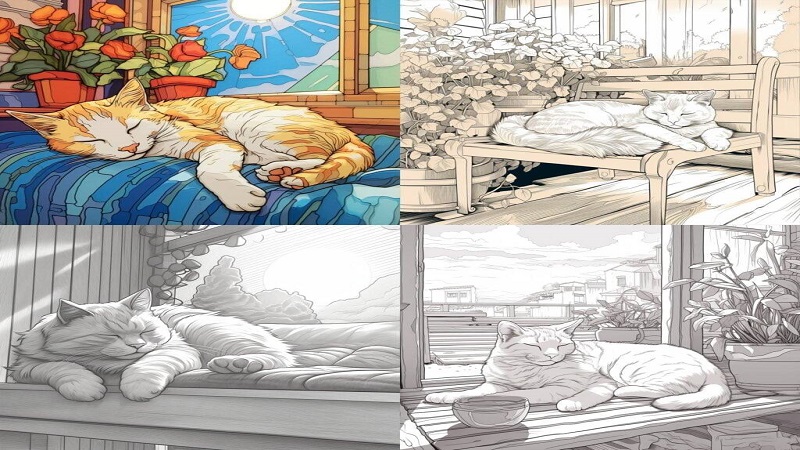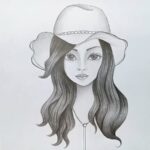Drawing cats has been a popular subject for artists for centuries. Whether you’re sketching a playful kitten or a majestic lion, mastering the nuances of feline anatomy, expression, and movement can be incredibly rewarding. This article will take you through the basics of cat drawing, offer tips on different styles, and provide step-by-step instructions to help you create stunning cat illustrations, no matter your artistic skill level. drawing:8mi9vnj1ccs= cat
Why Drawing Cats is Popular
Cats, with their graceful movements, sleek bodies, and mysterious expressions, have long fascinated artists. Here are a few reasons why drawing cats remains a favorite subject: drawing:8mi9vnj1ccs= cat
- Expressive Faces: Cats have highly expressive faces, making them perfect for depicting different moods. Their wide eyes, twitching whiskers, and subtle body language are fun to capture on paper.
- Challenging Yet Rewarding Anatomy: Their flexible bodies and distinct poses make cats challenging to draw, yet the satisfaction of capturing their grace makes it worthwhile.
- Cultural Symbolism: From ancient Egyptian art to modern internet memes, cats have always had a special place in human culture, often symbolizing independence, mystery, and elegance.
- Versatile Styles: Whether you’re drawing a cartoonish, kawaii-style kitten or a realistic, detailed housecat, you can experiment with different techniques to showcase your own artistic voice.
Materials You’ll Need
Before you start drawing, gather the materials that will make your cat drawings more fluid and creative:
- Pencil and Eraser: A basic pencil for sketching and an eraser to make corrections. If you want to add depth, use different pencil grades.
- Paper: Sketching paper, drawing pads, or any smooth surface you prefer to work on.
- Fine-liners or Ink Pens: These can add a finished look once you’ve laid down your pencil sketch.
- Colored Pencils or Markers: These tools are great for adding color and texture to your drawing.
- Reference Images: Whether from real life or online, using a reference is crucial for capturing proportions and anatomy accurately.
Step-by-Step: Drawing a Cat’s Face
1. Start with Basic Shapes
Begin by drawing a circle for the cat’s head. You can add a horizontal and vertical line through the circle to help with facial symmetry. These will guide you in placing the cat’s eyes, nose, and mouth evenly. Add a triangle for the nose and two large almond shapes for the eyes on either side of the vertical line. Draw small curves above the eyes for the brows.
2. Sketch the Ears and Body
From the top of the head, sketch out two triangles for the ears, slightly tilted to capture the natural position of a cat’s ears. Cats’ ears are usually placed at the top of their heads, but their exact position can vary based on the breed. For the body, use soft curved lines to give the head some context, and sketch out the neck and shoulders.
3. Define the Features
Now, define the eyes by darkening the outline, and add pupils, keeping them vertical for that iconic cat look. Don’t forget to detail the inner structure of the ears and add a light touch of whiskers from the sides of the nose.
4. Add Fur and Details
At this stage, you can add fur details by drawing small, quick strokes around the edges of the face, particularly around the cheeks, to give the cat a fluffy appearance. To create more texture and depth, add light shading around the eyes, nose, and under the chin. Reade more my website:
5. Finish the Drawing
Finalize the details by tracing over your drawing with ink or a darker pencil. If you want a more realistic look, add more shading to the fur, paying attention to light and shadow. If you prefer a cartoon style, keep the lines clean and bold.
Drawing Cats in Different Poses
Sitting Pose
For a sitting cat, start by sketching a round head and an oval for the body. Cats often sit with their tails curled around their feet, so sketch the legs bent underneath and the tail wrapping around the body. Add details like the facial features, fur texture, and shading to complete the drawing.
Walking or Prowling
To capture a cat in motion, it’s essential to understand feline anatomy. Begin by drawing the head and a long, curved line for the spine, which will guide the body’s movement. Cats walk with their heads forward and their bodies elongated, so sketch out the legs accordingly, showing the front legs extended while the back legs are bent. Don’t forget to add the tail, which balances the movement.
Playful or Lying Down
Cats are known for their playful nature. When drawing a playful or resting cat, try experimenting with exaggerated curves and loose body positions. You can show the cat stretching with its paws extended or lying on its back with its belly exposed. drawing:8mi9vnj1ccs= cat
Mastering Cat Fur Textures
Drawing fur can be tricky, but it’s crucial to make your cat look realistic or more stylized. Here are tips for both:
- Short-Haired Cats: For short-haired breeds, use small, tight strokes to represent the texture. Keep the strokes light and consistent.
- Long-Haired Cats: Use longer, sweeping strokes to show the direction of the fur. Make sure to layer the strokes for a fuller, fluffier look.
- Shading Techniques: Depending on where the light is hitting the cat, use shading to define the fur’s depth and dimension. The darker areas will be where the fur folds or curves.
Different Styles for Drawing Cats
Realistic Cats
If you’re aiming for realism, focus on anatomical accuracy. Study the muscle structure, fur patterns, and facial expressions. Use shading techniques like cross-hatching to add texture and depth. Realistic cat drawings often require more time and attention to detail, but the results are stunning.drawing:8mi9vnj1ccs= cat
Cartoon Cats
For a more playful, exaggerated style, try drawing cats in a cartoon or kawaii manner. You can simplify the anatomy by using basic shapes like circles and ovals, and add large, expressive eyes to convey emotion. Play around with proportions, such as making the head larger than the body for a cuter look. drawing:8mi9vnj1ccs= cat
Abstract or Stylized Cats
In abstract art, the cat’s form can be greatly simplified or altered to capture a mood or idea rather than realistic anatomy. You can use bold lines, vibrant colors, or geometric shapes to create unique interpretations of cats.
Challenges and How to Overcome Them
- Proportions: Feline anatomy can be tricky. If you’re struggling with proportions, use a reference photo and break down the cat’s body into simple shapes (circles, ovals, etc.).
- Capturing Movement: To draw a cat in motion, observe real cats or videos to understand their fluid movements. Practice quick sketches to improve your ability to capture action.
- Fur Texture: Drawing fur can be overwhelming. Start with basic strokes and gradually build layers to create realistic fur. Don’t be afraid to experiment with different techniques until you find what works for you.
Conclusion: Why Drawing Cats is a Fun Artistic Challenge
Whether you’re a seasoned artist or a beginner, drawing cats offers a unique blend of challenge and enjoyment. Their expressive faces, elegant anatomy, and dynamic poses provide endless opportunities for creativity. With practice and patience, you’ll be able to capture the essence of a cat in your own unique style. So, grab your pencil and paper, and start drawing these fascinating creatures today!
By mastering cat anatomy, exploring different drawing styles, and incorporating textures and details, you’ll soon find that drawing cats is not only a fun hobby but also a valuable skill for expanding your artistic portfolio.


